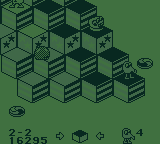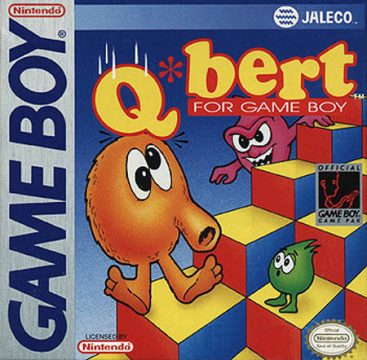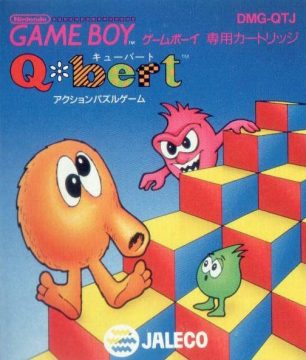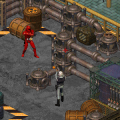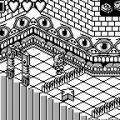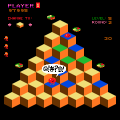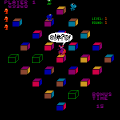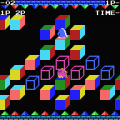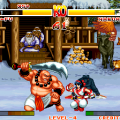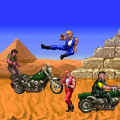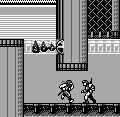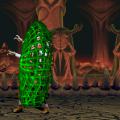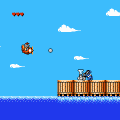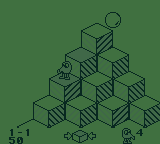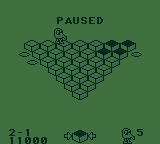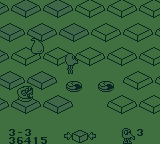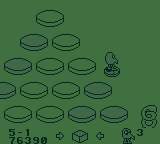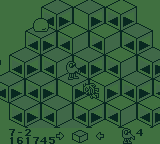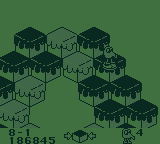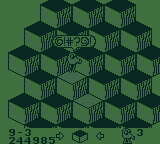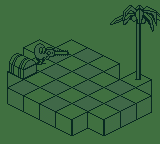In September 1984, Not long after the video game crash, Columbia / Coca Cola had closed Mylstar Electronics and all of the Gottlieb pinball assets, but held on to the Q*bert franchise. From the late 1980s to early ’90s, a company called JVW Electronics was managing the license, which led to a 1988 Atari 2600 re-release and the NES Version by Konami. Only in 1992, JVW’s sublicense found itself in the hand of a developer who used it for original content, and that developer was Realtime Associates.
The first of two new Q*bert games arrived for the Game Boy early that year. It was a much more traditionalist effort than Qubes, using the exact same core mechanics as the 1982 game. The main difference comes with the changing stage layouts like in the MSX game, but they’re nowhere near as adventurous. Since the 64 arenas don’t fit on the Game Boy screen, it’s possible to pause the game to have a look at an overview map. Even though enemies are not shown on the map, this allows to analyze the current situation at leisure, which takes out much of the frantic pressure that made the arcade games so exciting. With the varying stage layouts, enemies can appear at very different positions each time. To prevent the game from unfair trial and error, their appearance is announced beforehand by a blinking crosshair. The only new type of enemy is a drop that goes up and down the structure and never falls off, but it is deleted together with all other objects when Q*bert traps a Coily. Every once in a while, fruit comes dropping down that can be picked up for extra points.
Considering that the vibrant colors used to be one of the defining characteristics of Q*bert, the Game Boy cannot hope to fully capture the charm of the cartoon world, and the many varying tilesets abandon the Escher effect, but at least the characters are fairly big and recognizable. Every few stages, the player is rewarded with a clip from “Q*bert the Movie”, which depicts the noser’s comical war against a palm tree. When all the scenes are strung together, though (which the game does after the final stage), it amounts to little more than a minute of footage or two.
For a handheld game in 1992, Q*bert for Game Boy is adequately competent and has a few good ideas how to lend some more complexity to the classic concept, but ultimately it just feels like a sedated shadow of the arcade game, which lacks both the bite and the flair needed to make it as great.
